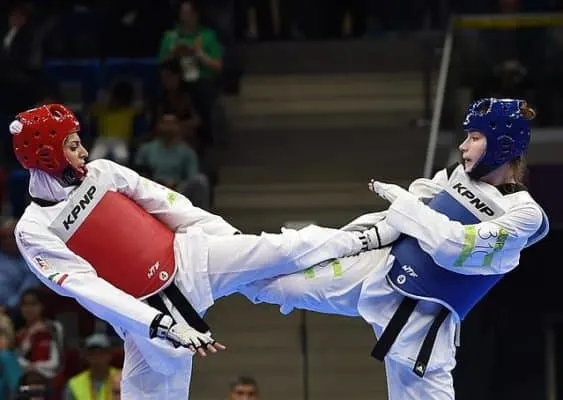
Martial Arts can be fun to learn and they can be a great way for people to learn how to defend themselves. However, there is some risk one takes when they decide to begin learning one. There are some unsafe martial arts that certainly can be very risky while others are very safe for both kids and even senior citizens! The problem is that many do not know about some of the safest martial arts out there.
We decided to help by compiling a list of ten safe martial arts that are also quite effective in real life. Unlike non-combat martial arts such as Tai Chi, which might be safe but won’t teach you any defensive moves, these martial arts are all effective in their own right. Each one teaches both offensive and defensive moves, while some even have several tournaments you can go into. Here are ten of the safest martial arts that are effective in real life.
- Brazilian Jiu-jitsu
- Krav Maga
- Boxing
- Taekwondo
- Wrestling
- Aikido
- Hapkido
- Wingchu/Wushu
- Karate
- Judo
Let us be clear before we dive into these martial arts. There is no sport or combat martial art that will be completely safe. There are always going to be possible accidents, which are simply part of life in general. However, there is a difference between some martial arts and others when it comes to safety.
On top of this, any martial art can be safe with the right instructor who will ease you into full contact situations. That said, there are simply some martial arts that are a bit safer than others while being effective. That is what we’ll be discussing here.
10. Judo

Judo is not only an effective martial art, it’s also an Olympic sport. This is the martial art that former UFC champion Ronda Rousey learned and was effective in her UFC fights. The sport deals often with throws and holds rather than strikes. However, Judo also teaches submissions that can be effective in both the stand-up & ground position.
This means that you could learn how to submit a person while in hand-to-hand combat, and if by chance you were on the ground as they attack you, you’ll learn how to defend against that. Judo is incredibly safe to learn because it is well-known for taking things slowly, with precision being prime for them. Judo philosophy is that slowly going through everything will help people master each step.
This also allows for safety to be in play, as the slow nature in which you’re taught will allow you to know how to protect yourself. While you learn things on your own in this area, instructors also teach you safety precautions and maneuvers. Whether it is learning how to fall or even learning how to use your body properly so that you do not injure yourself performing a hip-toss or something similar (referred to as a breakfall). All of this keeps your safety in mind at all times.
9. Karate
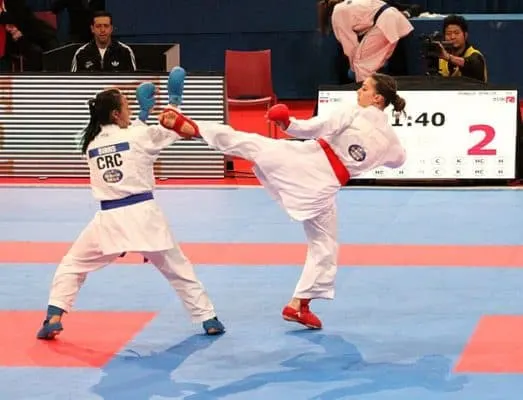
Karate is one of the best martial arts one can learn, especially as a kid. When people ask about what to teach young women or girls, Karate is often one of the top choices. The reason for this is that just a few moves can be taught to help one know how to defend themselves. Karate is a striking martial art, meaning most of the things you learn will be focused on throwing/landing a strike as well as how to defend against them.
Students will also learn several blocking techniques, which can be helpful in self-defense. Some of the more modern forms of Karate even teach joint-locks, grappling, and restraints. These are forms of painful submissions or those where you’d hold a person in a position where they cannot move.
Most Karate instructors teach you everything at a proper pace, making sure to never mix skill levels that are not equipped to be in the same class. Students are even taught how to properly stretch before training so that they avoid potential injury. Yet it is much more than that.
To prevent injuries these days, even the old school concept of using “wood” has been removed in some dojos in favor of hard plastic boards a person will break-through. Wood is still often used in ceremonies but not in classes.
When students are learning how to do proper kicks, a lot of the time, you’ll have the instructor taking the kick from his or her student. This is to prevent possible injuries to students. However, many also utilize senior students or another instructor who will wear a lot of specific padding. This will allow kicks and even punches to be thrown without hurting the person taking the move.
Even black belts with high degrees on their belt will still have people stand around in this padding. You’ll also see dummies used for stationary kicks and punches. They pretty much all look the same with a random torso and head. Yet it does not hurt to hit them.
On top of ALL of this, you’re always learning on padding. So any potential slip and/or fall won’t result in any problems, because you are not landing on concrete but, rather, a padded surface.
8. Wing Chun/Wushu
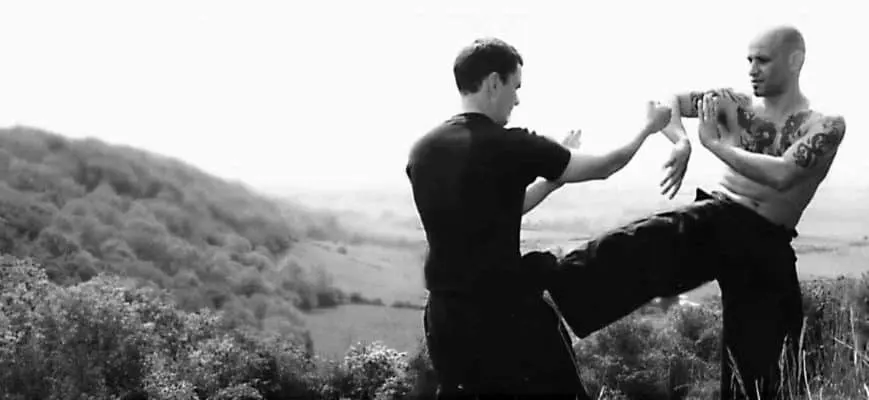
Wing Chun has managed to grow in popularity over the last number of years for understandable reasons. It has managed to get in on the “self-defense martial art” business. Wing Chun is technically a form of the Southern Chinese martial art style known as Wushu. While there can be some small differences, the main thing is that Wing Chun is often taught in the West while Wushu is taught in Asia.
Wing Chun tends to deal with more self-defense forms while Wushu classes teach the overall martial art style. Wing Chun tends to dive more so into self-defense techniques simply due to this being more popular for Westerners. Wing Chun is well-liked by people due to being part of the “soft style” of martial arts. In the world of martial arts, there is both a hard and soft style.
Soft style means the defender will only need to exert a little force to deflect an attacker’s moves. The idea is that they will use the attacker’s own momentum against them, with the goal of getting them to move in the direction the defender will have the best advantage. Attackers will be off-balance and you’ll only need to deliver a force good enough to put a person down and nothing more.
In a Wing Chun class, this can be really useful and it can be great for even kids to know about. Since the idea is to avoid hurting the attacker unless you have to, a person will learn proper restraint (plus, injuries in class are next to impossible). Meanwhile, there will be proper defense knowledge learned to keep you safe too. Many Wing Chun practitioners relate it to being like bamboo. You bend well but don’t break.
Some stuff will involve more force, which is when more padding or padded gear will be used for students. Yet this is not as commonly needed outside advanced classes. Since you’re not trying to use too much force, the move-set is safe for even the elderly. Your body won’t be forced to do too much, which can prevent a lot of potential injuries.
You’re quite literally learning how to do the least amount to get the best outcome, making the style incredibly easy for people to learn.
Moreover, you’ll learn how to move correctly as well as how to stand in fights. Footwork can make all the difference in a real fight and even in classes, as you’ll find out how to keep from falling over, how to use momentum in your favor, and much more. The reason this is an important thing for safety is that by knowing how not to fall and how to use proper body movement, you’ll never be in a position to get hurt.
That is why Wing Chun is so well-liked as a form of self-defense. People know they are prepared for anything and can defend themselves, without having to do much to accomplish this.
7. Hapkido
While some will find Hapkido to be an unsafe martial art to learn, we believe it to be the opposite. While what one might learn could be considered a bit dangerous, you will learn it in one of the safest environments possible. Hapkido is a Korean martial art that belongs to the “Hybrid” list, due to it involving techniques you could learn in other martial arts systems.
Many find it to be one of the best self-defense martial arts on the planet, and it’s not shocking to see why. Instructors will teach strikes, joint locks, grappling, & throwing techniques. You will even learn how to properly use traditional weapons in combat such as a knife, sword, rope, cane, short stick, mid-level staff, long staff, and even nunchucks. The weapons you learn will differ heavily from dojo to dojo, however.
Due to the weapons, they teach long-range martial arts techniques. Of course, the rest of the martial art teaches close-combat techniques. You might learn things like pressure point striking, which can be extremely helpful in self-defense to help you stop a potential attack and bring someone down quickly. Hapkido’s overall goal is to show you how to redirect force & control your opponent, emphasizing the circular motion in life.
Hapkido focuses heavily on safety while teaching all of this. They literally go so far as to tell you exact foot placement and overall footwork techniques as well as body positioning, so that you never get hurt trying to do something. Of course, they heavily focus on leverage, which is something that can be invaluable for a martial artist to learn. This can help you take down opponents far larger than yourself, as well as those much stronger than you too.
6. Aikido
Most people who study Aikido rarely complain of injuries or anything of the sort. A lot of what they teach begins with safety measures first. This is because of what this martial art teaches, throws and joint-locks. Of course, some Aikido dojos will also incorporate weapons. This truly will differ depending on where you train and who you train under.
They also teach people about proper breathing techniques, keeping you aware of how important this can be in a fight. Instructors also teach you how to face off with multiple attackers by teaching simple concepts on how you should turn and/or move among the many.
The entire idea behind Aikido was to form a martial art that would teach people how to defend themselves all while keeping their attackers free from injury. The concept was that we’re all unified with the same life energy and should focus on “the way of the harmonious spirit.” In fact, the main goal that students reach for is how to overcome one’s own anger, problems, etc.
Many instructors even teach you how to stop things, before violence ever comes up. But if you must fight, then you’ll be prepared. While Aikido can be brutal on your wrists, many instructors teach you how to toughen up your arms completely as well as your body. That way, you’ll be prepared for every next step in your training.
Instructors, like in Judo, teach you how to fall and land correctly to prevent an injury. Importantly, they will also teach you how to do the unique Aikido throws without getting hurt. This can be very important, as one can easily get hurt trying to throw someone over. Yet you learn correct body positioning, how to stand, and much more.
Due to all of this, Aikido is often looked to as a tremendous self-defense martial art and one of the safest you can learn. Heck, you’re even taught how to avoid hurting your opponent as well as yourself, how could it not be safe, right?
5. Wrestling
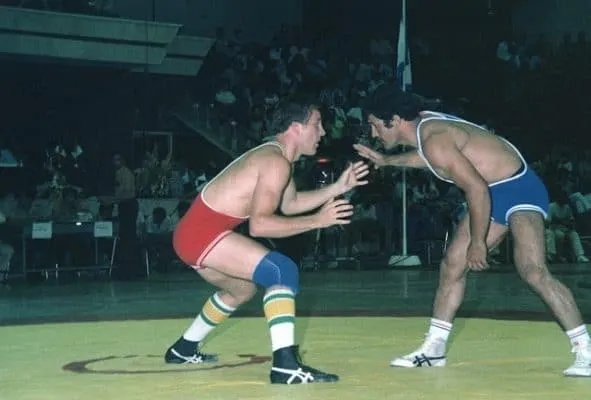
There have been many names for “wrestling” throughout history as well as many forms of it. Some of the hybrid forms were utilized by Greek Armed Forces for hundreds of years while others were used simply as a sport. The most common wrestling form most know about is Greco-Roman style wrestling, which dates back to the Greek and Roman forms of the sport. This is even the style of wrestling in the first Olympic Games event!
While “wrestling” might not be considered a martial art by some, it technically is in all honesty. Instructors will teach you how to use your body well, from holds and submissions to even scientific concepts like using your own leverage as well as your opponent’s. Plus, you’ll learn how to take someone down to the ground without getting hurt yourself.
Instructors will help you build your body to fit the weight class you’re in as well. This can be important for safety, as you won’t often wrestle people in your class that are a lot larger than yourself. That means you’ll have a far lower risk of injury. You’ll be strong and agile enough to do what you need to do. Of course, all of this takes place on a mat.
Do keep in mind that the mats you learn on while training will often be pretty nice too. Landing on them will help and you’ll eventually graduate to a slightly harder mat that will help you build your body. Like in Judo or Aikido, you’re taught how to fall. That ensures you’ll know how to land without getting hurt. That said, if you’re being taken down and you know you cannot stop it, knowing how to fall can make all the difference. You’ll also often wear protective headgear just to ensure more safety precautions are taken.
4. Taekwondo
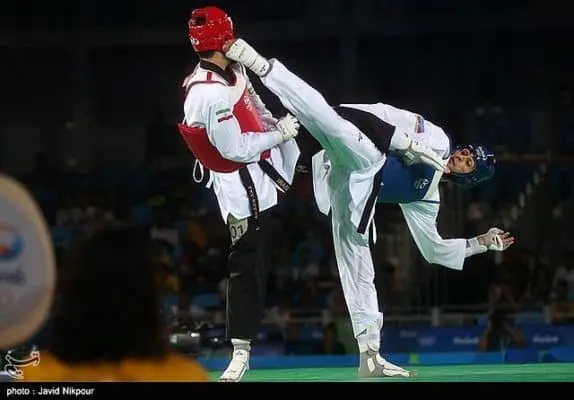
Taekwondo(TKD) is another heavily strike-based sport. There is obviously some risk when practicing the martial art but dojos make sure safety precautions are taken heavily. When you train, especially when sparring, students wear protective gear. Often you’ll see shin pads as well as headgear to protect you further. Many dojos also teach a style that does not involve knockout blows, so you can train in an even safer way.
A lot of the time, classes for kids will teach them how to do moves but they won’t spar with other kids. Which only further keeps safety paramount for the dojo. Plus, like others you might see, this martial art takes things slowly. Well before you’d even get to full contact, you’re not only taught how to do moves but also how to block or defend them too.
That extra knowledge provided enhances safety because you know how to avoid getting hit just as much as you learn how to throw a nice kick or punch. Of course, in Taekwondo, kicks are the biggest thing you’ll learn. These can be very helpful when in a real fight situation. Plus, you’ll often see these TKD kicks employed in MMA fights in the UFC, Bellator, or other MMA promotions. That is due to their highly effective nature and knockout acumen.
3. Boxing
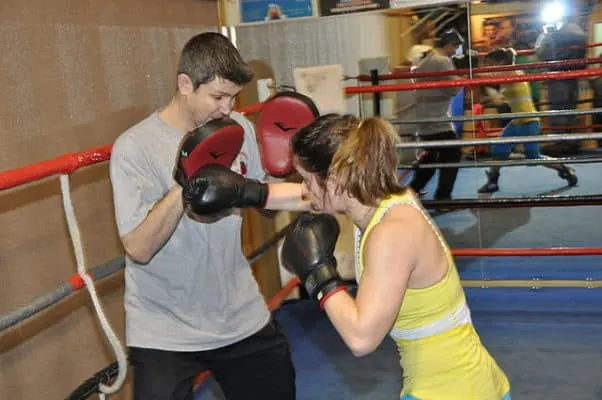
Boxing is likely one of the safest things one can learn. Safety precautions are taken HEAVILY outside of the professional side where boxing is more about points rather than knockouts. In the Olympics, boxers are forced to wear safety gear and you’ll even train in the same types of gear. Not only are you wearing gloves to keep your hands from getting broken but you’ll also wear great headgear that can keep you from getting knocked out or sustaining a terrible brain injury.There is still some risk but studies have shown that you’re just as likely to sustain a concussion playing football or hockey as you will in boxing.
Great boxing instructors teach you terrific technique, which can help a boxer know how to throw and land effective punches. People often throw strikes without knowing how to do so and can injure themselves frequently. You’d be surprised how often this happens.
That said, they also teach you how to block properly. Therefore, you’re learning about how to keep yourself safe. This can be extremely helpful in right fight situations.
2. Krav Maga
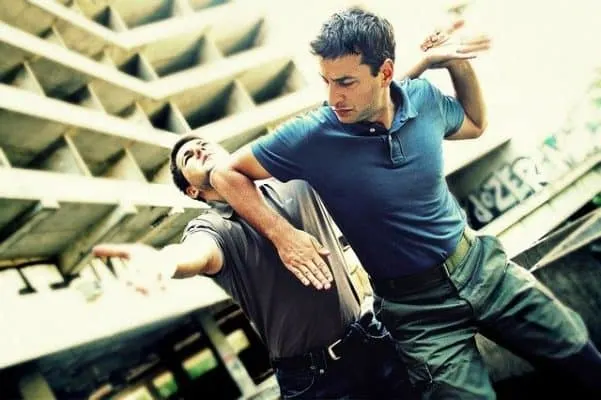
Krav Maga is an Israeli martial art that is taught primarily to Israelis via Isreal’s Armed Forces or Special Forces. It is known by many to be one of the best self-defense martial arts on the planet. This is extremely important to remember, as they quite literally teach you how to keep yourself safe in real-world situations. While there might be some possible injury in training, this is very rare to see.
Like in other martial arts, Krav Maga is taught slowly where everyone learns until they have stuff down completely. Well before full contact is involved, proper instructors have already seen that a person is capable of doing a move or moves correctly. Yes, due to the brutally efficient nature of the moves that are taught, there is always a risk for injury. Therefore, some assume that Krav Maga just isn’t safe to learn and worry that they could break something in training, but this is extremely rare.
Why? Instructors do not overly push students in Krav Maga. They are all very aware of how brutal their moves and methods can be. Thus, they want to make sure you learn at a pace you’re comfortable with and they want to make sure you can do things right. This is not only to ensure your safety but the safety of other students too.
This is the cool part about Krav Maga. You learn, safely, how to defeat another human being. Of course, there are different forms of Krav Maga teaching. There is the main, overall martial art that teaches both offense & defense. Then there are Krav Maga self-defense courses, which do not dive into some of the brutal offensive moves but will teach some along with their many defensive moves. It is merely up to you regarding which you’d prefer. Yet both are completely safe to go into.
1. Brazilian Jiu-Jitsu(BJJ)
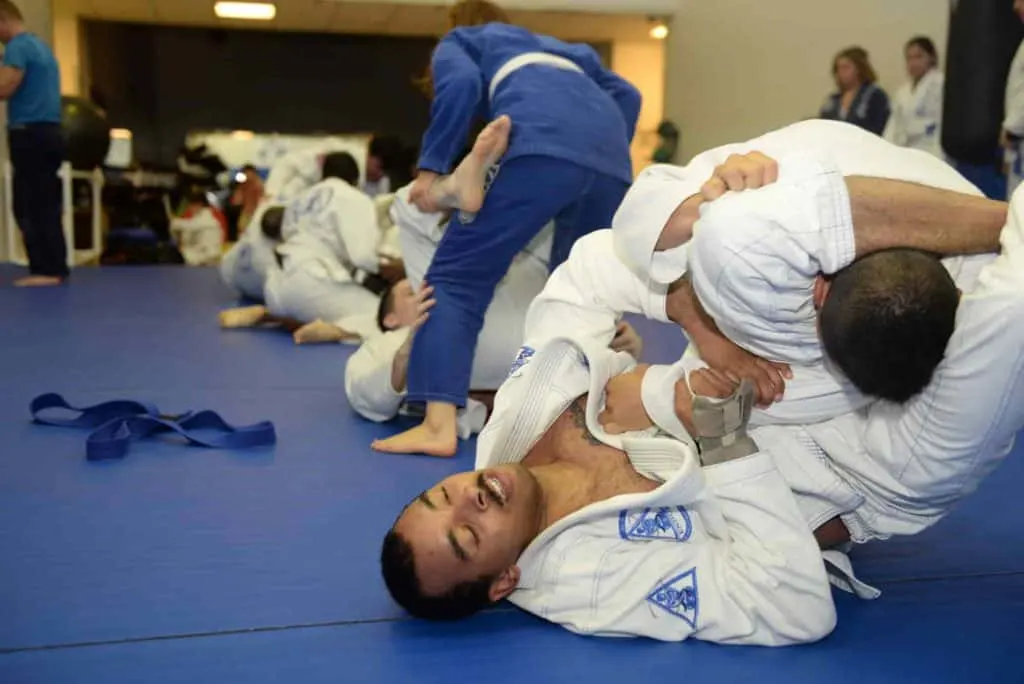
Jiu-jitsu is literally translated as “gentle art.” Brazilian Jiu-Jitsu teaches only what BJJ is connected to, which is not striking but holds and submissions. BJJ is considered by many to be the safest martial art to learn due to this. You’re more likely to pull a muscle than break something in BJJ, which is a big deal. Of course, you learn how to stretch and prepare your body for the things you learn.
Some assume BJJ is ineffective considering they do not teach strikes. However, in real fight situations, BJJ has proven to be incredibly valuable for people. This was proven in the early days of the UFC when the amazing Royce Gracie representing Gracie Jiu-Jitsu went into the old school world of MMA that was incredibly brutal at the time. There, as a person who only trained in BJJ, he defeated all comers. Even those who trained in wrestling, taekwondo, and other well-known martial arts at the time.
A lot of BJJ is also taught on the ground while the student is on their back. Instructors will teach you how to gain correct positioning and even how to put someone in a multitude of submissions while on your back, such as the triangle choke.
In training, students often are forced to go at a snail’s pace. This is done to keep everyone safe, naturally. Your instructor will want to make sure you have mastered moves before you ever move on to something else. Even when you’ve mastered it, sparring mostly will go at 50% the pace you might normally see in a real fight. You won’t go full speed until much later on.
BJJ is also well-known for its incredibly long period to move up in belts. It can take people about a decade to move from white to black belt. You have to show true mastery of the martial art before you’re ever allowed to be among the top ranking BJJ practitioners. This shows that you know how to safely do everything from offense to defense. That is important to remember, if safety is your top concern.
Final Thoughts:
You’ll find from our list that there are several top martial arts that a person can learn safely. We know, by the looks of what you might see in movies or television, fighting of any kind can appear to be unsafe. Truly, it can be unsafe if you do not know what you’re doing. Even when you do, there is always a possible risk involved. However, injuries are rare in many martial arts for a reason.
You’re taught how to safely do things, which is often forgotten when you see things play out on screen. When you see the final result of training, it can appear as though martial artists had to have gone through some rigorous trial that was full of broken bones. Yet this is unlikely, as you can ask many martial artists if they ever broke a bone in their martial art. You’ll likely hear that they never have, which is not uncommon in the ten we listed.
This was due to great training from great instructors. Remember to always research into the dojo you plan to start training at before you go and train there at all. The right instructor is very important, especially for kids. Make sure that instructors are at the top of their martial art and even sit in on a class or two before you decide to get involved.
Many dojos allow people to sit in to get a feel of the classes before they sign up, as they want you to be prepared for what you’ll end up doing yourself. Always check to see if an instructor is certified to teach in their martial art, as several will need to go through all of that to be officially recognized as an instructor in their specific martial art.
Remember, who you’re taught by is important as they will teach you what you need to know to remain safe. Meanwhile, the protective gear you’ll be wearing will protect you the rest of the way in several martial arts too. Make sure that you buy the protective gear you need. Things like a mouthguard, cup, and padding will all be important in training. You’ll never know how important until that fateful day comes when having them pays off. Especially when it comes to a cup.
